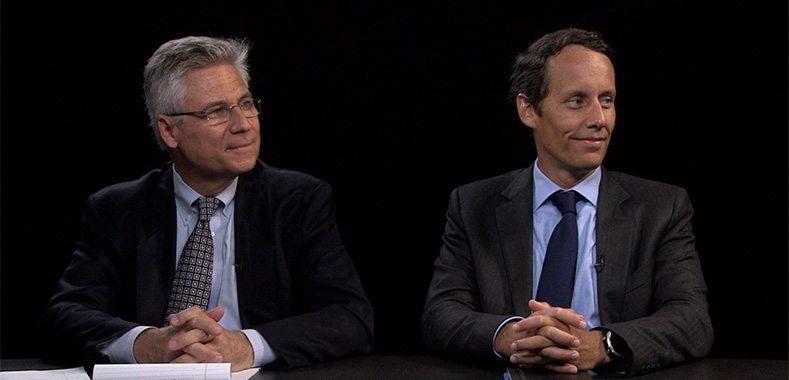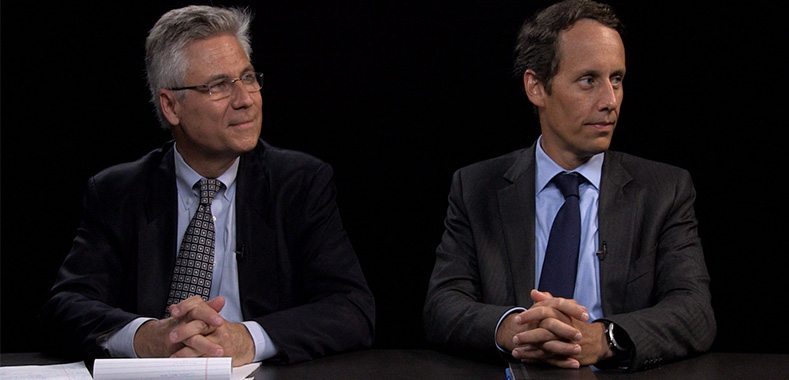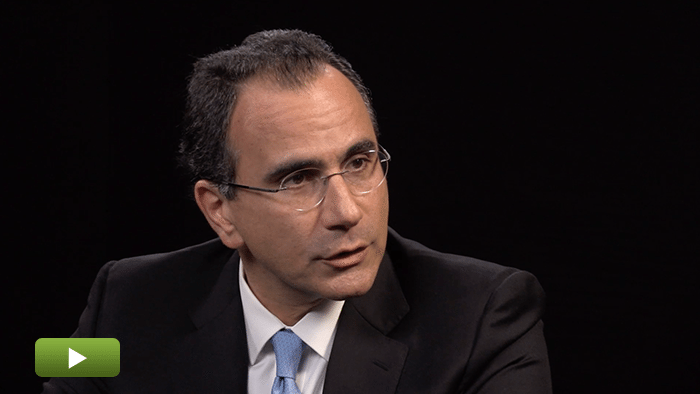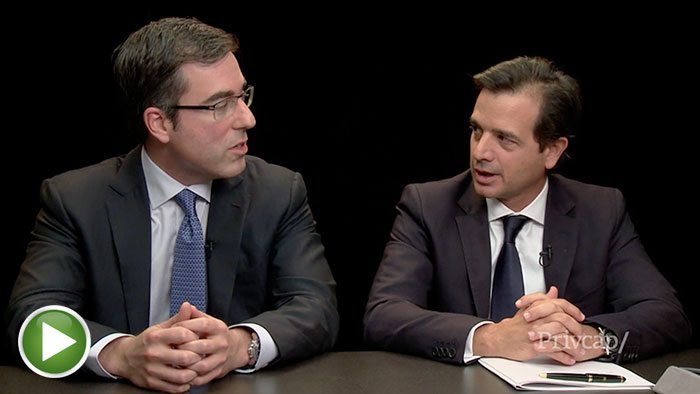Inside Mexico’s First Multifamily Portfolio Exit
Experts from PGIM Real Estate and GID International explore the for-rent housing sector in Mexico and how PGIM Real Estate’s recent exit of 2,500 apartments in Mexico City could set the stage for an institutionally accepted asset class.
Transcript Download Transcript
Inside Mexico’s First Multifamily Portfolio Exit
Real Estate Investing in Latin America
Zoe Hughes, PrivcapRE: I’m joined today by Alfonso Munk, CIO of the Americas of PGIM Real Estate, and Ken Munkacy, Senior Managing Director of GID International. Thank you both for joining me here today.
Alfonso Munk, PGIM Real Estate: Nice to be here.
Ken Munkacy, GID International: Thank you.
Hughes: In discussing the opportunities and challenges in Latin American real estate, I always think it’s best to ask you: where are you actually investing? Where are you putting your equity? Where do you see the greatest risk-adjusted returns? Alfonso of PGIM Real Estate, where are you spending most of your time and your attention?
Munk: In Latin America, we only look at three markets. Our main and most important market is Mexico, where most of about 89% of the current assets under management in Latin America are basically placed. We also have some activity in Brazil. We hope that will increase, given the opportunities we’re seeing. There’s also some activity in Chile. The rest of the markets in the region, although very interesting, for us, are not markets that we target; even the scale, the size of those markets.
Hughes: When you’re looking at Mexico, what property types, what geographies—where do you see the best opportunities?
Munk: Both our existing assets under management and our investment activity is concentrated in what we call the main pillars of Mexico’s economy. The first and most important sector we’re present in is the industrial sector. Over half our assets are in industrial, both developing industrial assets and buying income-producing assets, because there are different pockets of capital, either more core-like capital or more development-opportunistic capital. Housing is our second most-favorite sector in the country.
Hughes: For sale or for rent?
Munk: Both for sale and for rent. We’ve been investing along the different scale, whether it’s social and affordable housing, all the way to upper-scale housing. Then, most recently, given the new generations and the fact that people are mobile, the Mexican younger populations are looking for mobility and [they] can’t really afford—given the mortgage interest rates—a new home, for–rent housing has been a sector [where] we’ve been very present. We’ve been the pioneer, in fact, in Mexico. We’ve developed a portfolio of seven assets, about 2,500 units, which we developed and recently sold, so we tested the market successfully. Then, around housing, you have the third pillar, which is retail.
Hughes: Let me bring Ken in. How do you view the opportunities in Mexico? Where are you actually putting your equity, your capital, your dollars, your reals and your pesos?
Munkacy: We’ve been focusing on really harvesting what we’ve been doing in Brazil, which has been a protracted process, just because of the way the cycle’s become elongated. But we’ve spent a lot of time looking at the for-rent sector in Mexico as well, because of the same dynamics that are driving the housing market in the United States that are very present in Mexico. You have renters by choice and renters by necessity; the Millennials are a very active force in the housing. And, as Alfonso is knowing, they can’t afford to make the down payments on the house, the rental alternative is cheaper or the housing they can afford is two-hour commute. So, they want to be close to the 24/7 lifestyle-oriented renters with high amenities and services.
PGIM did a great job in doing what I would call the beta test for the market there and it was very prescient of them, back in 2008, I think, is when you started that portfolio—2008 to 2012.
Hughes: I’m interested, in terms of that exit but really in terms of the scalability of this, because this is an emerging asset class within real estate in Mexico. Talk to me in terms of how deep you think this market can become. Can it become like the multifamily market in the U.S.? Can it become that big an institutional asset class within real estate?
Munk: There’s a lot of talk about rental housing in Mexico, probably because of what we’ve done, but also people are interested because of the fundamental reasons that Ken mentioned. I have to say, that’s the good news and people get attracted to it. Having done the beta testing and having been the ones that have gone through the exercise, it is a difficult sector.
Hughes: What was the biggest barrier for you?
Munk: There are economical barriers, because when you go and look for sites in development of these assets and you do your numbers, it’s much more profitable, still, from a return perspective, to do housing for sale than it is for rent, given where rent levels are. So, a land plot—and you compare your feasibility analysis to do a housing-for-sale project—it’s still much better than for rent.
The rents are not there yet. We’ve been growing rents and we’ve been proving to the market, and the market demand and consumers, that rental housing should have higher rents. The second one…is a very operational intensive business. Renting homes and apartments requires expertise in the operational side, and, in Latin America, nobody knew how to do it. We had to start from scratch and create our own company to operate, to lease, to do credit checks, to deal with the tenants, to deal with turnover. That’s a very intensive business.
The third one is to adapt your product to the cultural and local flavors and needs. I’ll give you an anecdote. In Mexico, the Mexican population—in the U.S., you typically sign one-year contracts. If you want to sign a longer contract, people are willing to do it, but you have to give them a rent discount, because you’re going to do a longer contract.
In Mexico, people are concerned about doing a one-year contract, because…they thought you would kick them out of the unit. So, they will pay you a premium for longer-term contracts, which we didn’t know.
With respect to your question about scalability, it’s still to be proven. We do believe there is. It’s going to take a long time, like it did in the U.S., but eventually, I think that market is going to grow significantly.
Hughes: Ken, your thoughts? Do you think there is that scalability?
Munkacy: I do and we’ve spent a long time looking at the fundamentals. There’s a parallel universe in Mexico compared to what’s going on in the U.S. about the same…a lot of the same demographics. You have the Millennials, again, driving a lot of the housing market. You have dual–income families, you have the population marrying later and having children later.
The corporate, furnished apartments aren’t really there and hotels are an expensive alternative. But the market’s big. It’s about one million people who rent in what is called a gray market, in Mexico City. It’s bad, fragmented ownership. [There are] no services, no amenities; it wasn’t really purpose-built for the renter. Again, it’s introducing a new asset class. Look, 20 years ago, before some of the foreign investors came in, in shopping centers, you didn’t have that format or modern office space.
So, Alfonso’s right on. It takes a lot of market research to understand what is uniquely Mexican in the rental requirements. What makes a good unit in Mexico City is different from what makes it two hours away differently in Houston, for example. But I think it’s a mobile labor population—there’s a big, pent-up demand for it. You have a lot of foreigners coming in and out of the market; the connectivity between the Southwest United States and Mexico City in particular is a very strong flow of middle and upper–middle income management. I think that’s going to continue. But it is a long-term, durable asset class, I believe, in the same way that all the other food groups have become.
As a final point, the FIBRAs have demonstrated that there’s an appetite for income-producing assets.
Hughes: Alfonso, give me a sense as to the Mexican market. How are you viewing cycle risk at the moment?
Munk: It depends on the asset class. For instance, I don’t think apartments are, yet, an institutionally accepted asset class. You mentioned the FIBRAs. There are no FIBRAs in the rental market.
I think when the economy slows down—particularly when the U.S. slows down, because 80% of the exports of Mexico go to the U.S.—the industrial asset class will slow down. Whenever that happens, it’s more dependent on the economy of the U.S. than it is actually in Mexico. So, we think it’s a very defensive asset class, because the cycles in emerging markets, specifically Mexico, are mainly driven by supply.
We are less bullish on office just because of the excess supply. If you look at the vacancies in places like Mexico City or Monterrey, which are hovering around 18% to 20%, the same in Brazil—in São Paulo, you have 25% vacancy. It’s driven by the economy itself, but it’s also driven by the excess supply.
Office is complicated. I think hospitality, for the same reasons, is complicated. People go out and build a bunch of hotels, the economy goes down and you get excess rooms, which is happening right now in certain parts of Mexico. That makes it more hard, right? That’s why those sectors are the ones [where] we have to be careful.
In housing for sale, it almost adjusts itself, because once you’re building units you’re automatically selling them. You’re almost pre-selling the units. So, the moment the demand falters, you stop building.
Munkacy: So goes the United States, so goes Mexico. The U.S. is starting to cool in certain sectors. I agree that you’re probably a bit long in the cycle in some areas, particularly the office. There’s 170,000 square meters under construction. That’s a huge amount for anyone—a drop in the bucket to put down. So, there will probably be a softening of rents.
But I agree, the industrial side…continues to be very strong as its productivity becomes even more superior than China, the pricing of labor is still reasonable and it has a competitive advantage vis-à-vis the United States. I’m not going to say it’s a forever asset class, but between industrial and retail, the sales and the lease rates continue to do well. I think office will continue to be a question mark as supply comes on. The for-sale, in–town market seems to be very strong in the condo sector and I think a number of firms are looking to position themselves in the for-rent sector, so we’ll see how that plays out.






